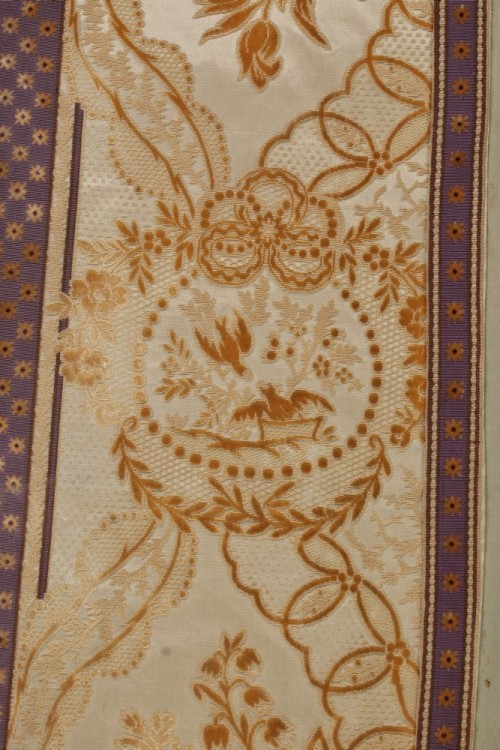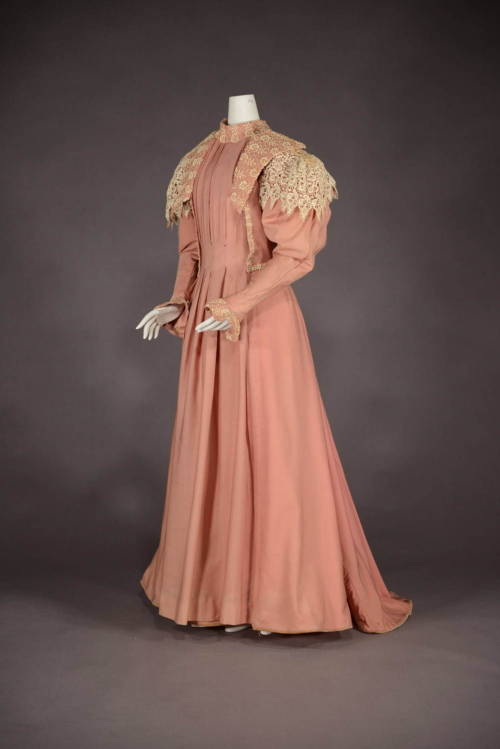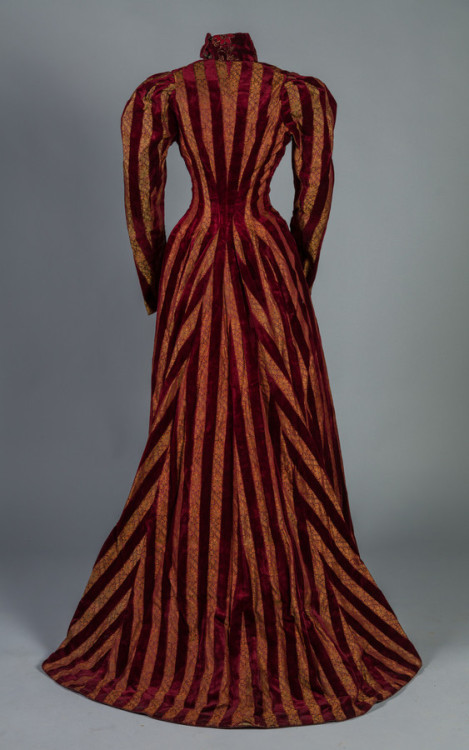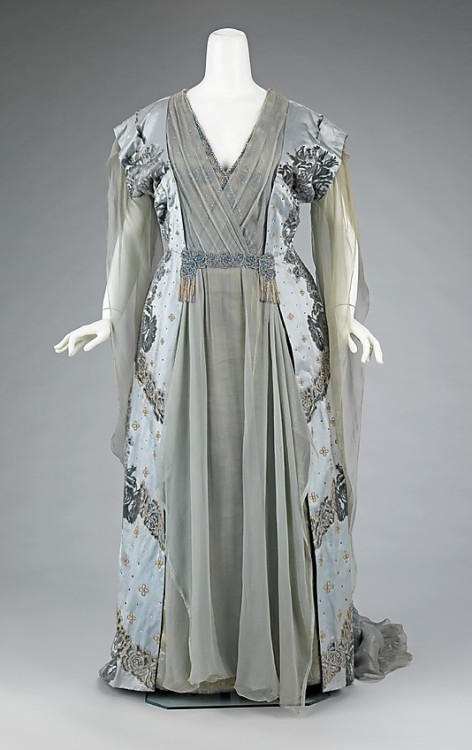#tea gown
Tea Gown, House of Worth
France, 1910
Every one knows that a tea-gown is a hybrid between a wrapper and a ball dress. It has always a train and usually long flowing sleeves; is made of rather gorgeous materials and goes on easily, and its chief use is not for wear at the tea-table so much as for dinner alone with one’s family. It can, however, very properly be put on for tea, and if one is dining at home, kept on for dinner. Otherwise a lady is apt to take tea in whatever dress she had on for luncheon, and dress after tea for dinner. One does not go out to dine in a tea-gown except in the house of a member of one’s family or a most intimate friend. One would wear a tea-gown in one’s own house in receiving a guest to whose house one would wear a dinner dress.
–Emily Post, Etiquette in Society, in Business, in Politics, and at Home, 1922.
Post link
Aesthetic Tea Gown
Liberty & Co., 1894
The Victoria & Albert Museum
“It was made for a member of the Liberty family, who owned a store in Regent Street, London. The green and yellow damask was registered as ‘Hop and Ribbon’ by Liberty’s in 1892-1893.
In 1884 Liberty’s had opened a dress department under the guidance of the designer E. W. Godwin. He was a member of the Aesthetic Movement, which favoured ‘artistic’ dress for women based on classical, medieval, Pre-Raphaelite and Renaissance clothing. The gown is close to Walter Crane’s designs for Aesthetic dress in Aglaeia, the journal of the Healthy and Artistic Dress Union. The ‘greenery-yallery’ colours are a feature of Aesthetic taste, while the epaulettes and high-waisted, dark green velvet overdress are historical references.”
Post link



House of Worth, tea gown, circa 1897; from the collection of the Palais Galliera, Musée de la Mode de la Ville de Paris.















